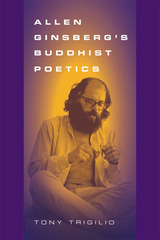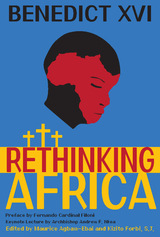2 books about 1926-1997

Allen Ginsberg's Buddhist Poetics
Tony Trigilio
Southern Illinois University Press, 2007
Allen Ginsberg’s Buddhist Poetics revives questions of poetics, religious authenticity, and political efficacy in Ginsberg's prophetic poetry. Author Tony Trigilio examines Ginsberg's Buddhism as an imperfect but deepening influence on the major poems of his career.
The first sustained scholarly effort to test Ginsberg’s work as Buddhist poetry, this volume goes beyond biography to contemporary critical theory and textual and historical analysis to show how Ginsberg’s Buddhist religious practices inform his poetry. Trigilio takes us through the poet’s first autodidactic struggles with Buddhism to his later involvement with highly trained teachers, as he follows the development of Ginsberg’s Buddhist poetics.
The book also considers the place of Ginsberg’s poetry in the cultural and aesthetic contexts of his career, covering the rise of an “American Buddhism”; the antiwar, drug decriminalization, and gay civil rights movements; and the shift from modern to postmodern strategies in contemporary U.S. poetry.
Allen Ginsberg’s Buddhist Poetics examines some of the most significant work produced by the poet after he had become a cultural icon and marks a new direction in the study of Ginsberg’s work. Of interest to scholars of Buddhism, American poetry, cultural studies, and Beat studies, this groundbreaking volume fills significant gaps in the scholarly criticism of Ginsberg’s spiritual poetics.
[more]

The Bop Apocalypse
The Religious Visions of Kerouac, Ginsberg, and Burroughs
John Lardas
University of Illinois Press, 2000
Blending biography, cultural history, and literary criticism, The Bop Apocalypse explores the religious concerns, metaphysical realities, and spiritual pursuits that undergirded the early friendship and literary collaborations of Jack Kerouac, Allen Ginsberg, and William S. Burroughs.
Presenting a religious biography of the Beats from the mid-1940s to the late 1950s, John Lardas shows that in rejecting many of the cultural tenets of postwar America, Kerouac, Ginsberg, and Burroughs created new visions of both self and country, visions they articulated through distinctive literary forms. Lardas examines how the Beat writers distilled a theology of experience--a religious vision that animated their everyday existence as well as their art--from a flurry of disparate influences that included the saxophone wails of Charlie Parker and Lester Young, the psychology of Wilhelm Reich, the linguistic theories of Alfred Korzybski, the hipster dialects of New York City, and especially the prophecies of Oswald Spengler. Revisiting the major works the Beats produced in the 1950s in terms of critical content, Lardas considers how their lived religion was incorporated into the way they wrote.
The first sustained treatment of Beat religiosity, The Bop Apocalypse takes a sophisticated look beyond the cartoonish reductions of the Beat counterculture. The Bop Apocalypse takes the Beats at face value, interpreting their sexual openness, drug use, criminality, compulsion to travel, and madness as the logical, physical enactments of a religious representation of the world. Far from dallying irrelevantly on the fringes of society, Lardas asserts, the Beats engaged America on moral grounds through the discourse of public religion.
Presenting a religious biography of the Beats from the mid-1940s to the late 1950s, John Lardas shows that in rejecting many of the cultural tenets of postwar America, Kerouac, Ginsberg, and Burroughs created new visions of both self and country, visions they articulated through distinctive literary forms. Lardas examines how the Beat writers distilled a theology of experience--a religious vision that animated their everyday existence as well as their art--from a flurry of disparate influences that included the saxophone wails of Charlie Parker and Lester Young, the psychology of Wilhelm Reich, the linguistic theories of Alfred Korzybski, the hipster dialects of New York City, and especially the prophecies of Oswald Spengler. Revisiting the major works the Beats produced in the 1950s in terms of critical content, Lardas considers how their lived religion was incorporated into the way they wrote.
The first sustained treatment of Beat religiosity, The Bop Apocalypse takes a sophisticated look beyond the cartoonish reductions of the Beat counterculture. The Bop Apocalypse takes the Beats at face value, interpreting their sexual openness, drug use, criminality, compulsion to travel, and madness as the logical, physical enactments of a religious representation of the world. Far from dallying irrelevantly on the fringes of society, Lardas asserts, the Beats engaged America on moral grounds through the discourse of public religion.
[more]
READERS
Browse our collection.
PUBLISHERS
See BiblioVault's publisher services.
STUDENT SERVICES
Files for college accessibility offices.
UChicago Accessibility Resources
home | accessibility | search | about | contact us
BiblioVault ® 2001 - 2024
The University of Chicago Press









